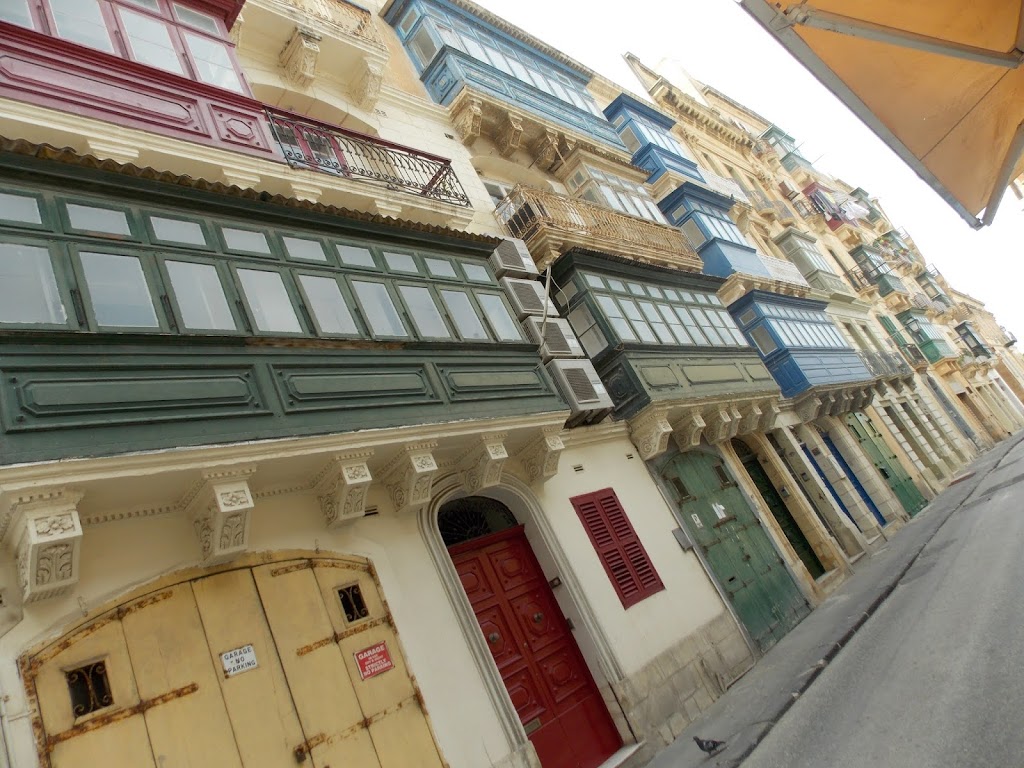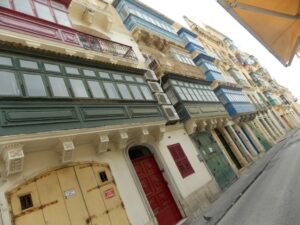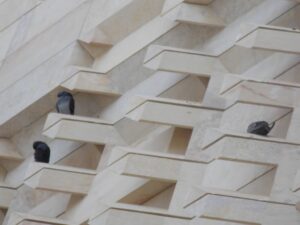Para entender las diferencias entre la Arquitectura en Malta y en España hay que saber primero que Malta es un país de algo más de 500.000 habitantes y España tiene alrededor de 47.000.000.
Es evidente que gestionar el primero es más sencillo que al segundo y en este post voy a centrarme en el funcionamiento de la Administración.
En Malta existe un elemento administrativo que se llama Planning Authority. Ellos realizan las funciones que en España se asignan a: urbanismo, gerencia de urbanismo y una parte del ayuntamiento. En Malta todas las funciones se concentrar en una una única institución, lo cual hace que su funcionamiento sea mucho más eficiente.
Planning Authority posee un sistema web, con acceso previo pago de los técnicos, donde uno puede consultar el plano completo del país (evidentemente más pequeño que España) y que para trasladar, de forma viable, este concepto a España se debería hacer por Comunidades Autónomas ya que de lo contrario conllevaría un exceso de información y con el peso que eso supone en términos informáticos.
Este fantástico sistema funciona muy parecido a: www.sedecatastro.gob.es, donde puedes acceder a cada ubicación. En nuestro caso puedes ver la referencia catastral mientras que en Malta puedes acceder al listado de proyectos (todos) que ha habido en esa parcela. En otra sección puedes visualizar la misma parcela con una serie de manchas de áreas, entendiendo gráficamente las normativas urbanísticas que le afectan.
Al acceder al listados de proyectos, los más antiguos no aparecen desarrollados en el sistema, pero sí tienes una información básica de que tratan. En el caso de interesarte contactas con Planning Authority y les pides el proyecto escaneado (coste aproximado de 30 euros) y en uno o dos días lo tienes en tu mail sin levantarte de tu asiento en la oficina.
Además figuran todos los proyectos actuales, desde que comenzó el sistema, en la base de datos. A éstos puedes acceder directamente pinchando en el listado y obtienes todos los planos, principalmente, plantas, alzados y secciones y plano de situación con fotografías (actuales y con la propuesta de proyecto).
Para nosotros, los españoles, nos faltaría la memoria, los detalles constructivos y los planos de estructuras que en Malta no se presentan a la administración. Entiendo que depende del técnico trabajar estas partes. yo sólo vi trabajar las estructuras de ellos.
Respecto a las normativas urbanísticas, una vez visualizas los rallados que afectan a la parcela y accedes a sus nombres, tienes todas las normativas urbanísticas disponibles en la web
¿Se imaginan un sistema así de eficiente en España?
Por el contrario nosotros no siempre tenemos acceso a la normativa urbanística, en general sí, pero en ocasiones puede haber planes parciales que no figuren en la web o son documentos tan pesados que pueden generar problemas de acceso y hay que solicitarlos directamente en las oficinas o en el mejor de los casos, por mail, con la espera propia.
Nuestra normativa urbanística es de mayor complejidad que las normas en Malta. Digámoslo así, los planes generales en España son menos concisos que los malteses y con excesivos matices. Alguno me dirá que mejor por que eso da más riqueza a una ciudad. Pues no lo sé. Malta es muy básica en su normativa urbanística y todo está teñido de gran homogeneidad que le confiere a la ciudad un orden visual de grandísima belleza y sosiego. Es decir, que la simplicidad en la normativa se traduce en cierta homogeneidad arquitectónica que, en mi opinión, genera calles más bellas.
Ahora hablemos de cómo funciona en España la consulta de los proyectos arquitectónicos para una parcela. En este caso es necesario que vayas a la Administración. Lo primero es que el proyecto puede estar en el Ayuntamiento y en Urbanismo, según el año en el que fue realizado y nos siempre ellos tienen claro donde va a estar. con lo cual tendrás que ir y preguntar. Si tienes suerte diste con el sitio a la primera y sino, tendrás que ir a la otra administración. Una vez los localizas, uno o varios proyectos, es posible que puedas escanearlos o fotocopiarlos, lo cual es un trabajo engorroso si tenemos que hacer cada uno de nosotros para cada proyecto. En Malta, por el contrario este trabajo se realiza una vez por la administración y cada técnico paga una cuota anual por tener acceso a todas estas informaciones. Es destacable hasta el momento el tiempo y dinero (sin contar alguna multa de tráfico) que en España gastamos para todas estas gestiones mientras en Malta se adquiere la información en una única mañana y sin levantarse del asiento. En el peor de los casos habrá que esperar dos días a recibir un proyecto antiguo por mail.
Es así que en España, perdemos un tiempo valiosísimo en estas gestiones o que, muchas veces, por no perderlo, no accedemos a esta información que sería un gran apoyo para el trabajo.
Además, en Malta esta información es libre para todos los técnicos que paguen su cuota y en España, depende del ayuntamiento, necesitas una autorización del propietario para acceder a ella. Sin duda, el sistema maltés es más democrático y transparente sin contar con mucho más eficiente.
Otra de las grandes diferencias viene a la hora de subir nuestro proyecto al sistema. El mismo queda blindado automáticamente en cuanto datos personales del proyecto se refiere pero el resto es visible para todos los técnicos. Una vez hemos hecho esto, en unos días Planning Authority nos envía comentarios sobre la documentación que falta, o bien, si detecta incumplimientos en la normativa para que sean subsanados. Una vez subsanados y completados, Planning Authority vuelve a revisar y reclamar informaciones cuantas veces sean necesarias hasta dar el ok, momento en el cual emiten el permiso de obra también por el sistema y con la misma visibilidad.
El sistema maltés es mucho más eficiente y de mayor calidad que el español. Mucho podemos aprender de ese país en lo que administración se refiere.
…………………………………………………………………………………………………………………………………………………
To understand the differences between architecture in Malta and in Spain, first you must know that Malta is a country of just over 500.000 people and Spain has around 47.000.000 of people.
It is clear thar managing the first one is easer than the second one and in this post I am going to focus on how the Administration works.
In Malta there is an administratie element called the Planning Authority. They carry out the functions that in Spain are assignet to: urban planning, urban planning management and a part a part of the city council. In Malta all functiones are concentrated in a single institution, which makes its operation much more efficient.
The Planning Authorit has a web system, with prior paid access for the technicians, where one can consult the complete map of the country (obviously smaller than Spain) and that to transfer, in a viable way, this concept to Spain should be done by Autonomous Communities since otherwise it would entail an excess of information and with the weight that this implies in computer terms.
This fantastic system works very similar to: www.sedecatastro.gob.es, where you can access each location. In our case you can see the catastral reference while in Malta you can access the list of projects (all) that have been in the plot. In another section you can visualize the same plot with a series of areas spots, graphically understanding the urban regulations that interest you.
When accessing project listings, the oldest ones are not developed in the system, but you do have basic information about what they are about. If you are interested, you contact Planning Authority and ask for the scanned project (approximate cost of 30 euros) and in one or two days you will have it in your emaul without getting up from your seat in the office.
In addition, all current projects, since the system began, are listed in the database. Then you can access directly by clicking on the list and you get all the plans, mainly, floors, elevations and sections and location plan with photographs (current and with the project proposal).
For us, the Spaniards, we would lack the memory, the construction details and the plans of structures that in Malta are not presented to the administration. I understand that it is up to the technician to work these parts. I only saw their structures work. Regarding the urban regulations, once you see the grating that affect the plot and access their names, you have all the urban regulations available on the web.
Can you imagine such an efficient system in Spain?
On the contrary, we do not always have access to the urban regulations, in general, yes, but sometimes there may be partial plans that do not appear on the web or are documents so heavy that they can generate access problems and must be requested directly at the offices or in the best of the cases, by mail, with the own waiting.
Our urban regulations are more complex than the regulations in Malta. Let’s put it this way, the general plans in Spain are less concise than the Maltese ones and with excessive nuances. Some will tell me that it is better because that gives more wealth to a city. Well I do not know. Malta is very basic in its urban regulations and everything is tinged with great homogeneity that gives the city a visual order of great beauty and tranquility. In other words, the simplicity of the regulations translates into a certain architectural homogenity that, in my opinion, generates more beautiful streets.
Now let’s talk about how the consultation of architectural projects for a plot works in Spain. In this case it is necessary that you go to the Administration. The first thing is that the project can be in the City Council and Urban Planning, depending on the year in which it was carried out and they are always clear where it will be with which you will have to go and ask. If you are lucky you found the site the first time and if not, you will have to go to the other administration. Once you locate one or several projects, you may be able to scan or photocopy them, which is a cumbersome job if we have to do each of us for each project. In Malta, on the contrary, this work is carried out once by the administration and each technician pays an annual fee for having access to all this information. It is remarkable so far the time and money (not counting any traffic fine) that in Spain we spend for all these procedures while in Malta the information is acquired in a single morning and without getting up from the seat. In the worst case, you will have to wait two days to receive an old project by mail.
Thus, in Spain, we lose precious time in these efforts or that, many times, because we do not lose it, we do not access this information, which would be a great support for the work.
In addition, in Malta this information is free for all technicians who pay their fee and in Spain, it depens on the city council, you need an authorization from the owner to access it.
Without a doubt, the Maltese system is more democratic and transparent without being much more efficient.
Another of the big differences comes when uploading our projects to the system. It is automatically shielded as far personal data of the project is concerned, but the rest is visible to all technicians. Once we have done this, in a few days Planning Authority send us comments on the missing documentation, or if it detects non-compliance with the regulations, so that they can be corrected and completed, Planning Authority rechecks and claims information as many times as necessary until the ok is given, at which time the work permit is also issued through the system and with the same visibility.
The Maltese system is much more efficient and of higher quality than the Spanish one. We can learn a lot of from that country as far as administration is concerned.




Deja una respuesta